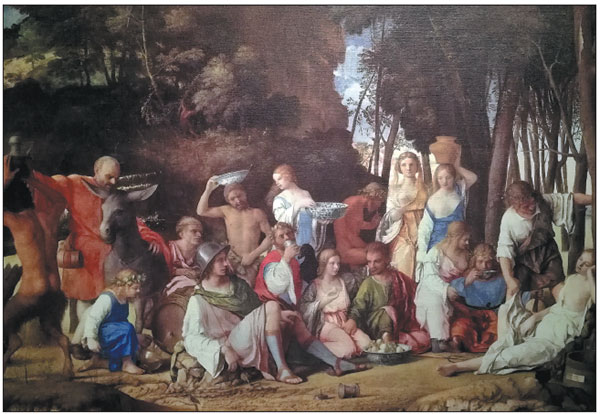 |
|
In The Feast of the Gods, an oil painting by Bellini and Tiziano, the three fruit bowls are likely to be China-made blue-and-white porcelain. [Photo by Zeng Ya/For China Daily] |
Italy considers joining China's Belt and Road Initiative, which could reignite ancient trade route that was featured in classical works of art.
The lands of Italy and China have been connected for more than two millennia, thanks to the ancient Silk Road trade route.
Trade between the two nations began to blossom on an unprecedented scale in the first century BC after the Roman Empire expanded its territory to the east and south.
Citizens of the Roman Empire received luxuries such as silk ware from China, while Roman products like glassware were also exported to China.
The Silk Road was also central to cultural exchanges between the two nations.
Evidence of the exchanges was shown in Beijing's National Museum of China in an exhibition called When the Silk Road Meets the Renaissance last summer.
Exhibits from museums in China and Italy, as well as the rest of Europe, were arranged side by side for comparison, showing similarities and inspirations from both cultures.
The most eye-catching was the wall painting of Flora, the goddess of flowers, standing at the entrance of the exhibition hall. It was unearthed in the ancient city of Pompeii, which was devastated by a volcano eruption in the first century.
The goddess wears a gown that appears to be silk, judging from the soft, fluffy pleats. This could be direct evidence for a silk trade between China and the Roman Empire.
Apparently, the Romans had no idea how silk was produced.